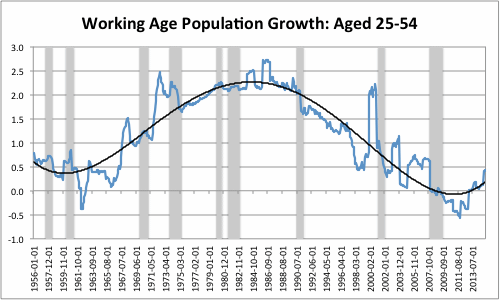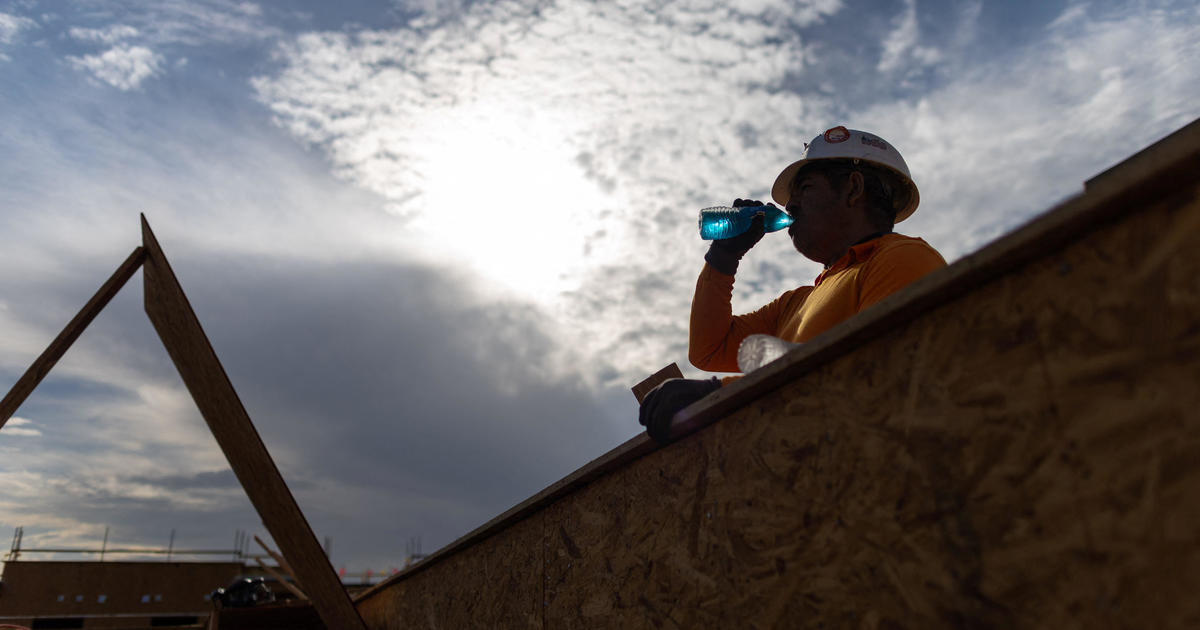America's working age population is finally growing again
For most of the last two decades, the growth rate of America’s workforce has been declining because baby boomers have been retiring at a faster pace than younger workers are entering the labor force. However, the potential workforce recently began growing again. What impact will this have on the economy?
As shown in the chart below, the growth rate of the working age population increased in the 1960s and 1970s as baby boomers reached working age (the graph shows population growth, but the workforce grew even faster during these decades due to the increased participation of women). However, in the mid-1990s, this growth rate began falling persistently as baby boomers started retiring, and it became negative in September of 2008.
This age group’s falling growth rate finally turned around in January 2012, and it became positive once again in August 2013, though it remained relatively low, around 0.1 percent. But at the beginning of 2015, it jumped to 0.4 percent, and it appears poised to continue growing.
The workforce expansion rate is an important determinant of overall economic growth. According to economic theory, GDP’s growth rate can be decomposed into the sum of the growth rate in population and the growth rate in technology. In essence, what happens is that as the working age population grows, the demand for goods and services increases, the economy expands to create them and in the process creates new jobs for the expanded population.
But what we care about isn’t overall GDP growth. Rather, we care about how much output is produced per person -- the most common measure of the standard of living economists use (though as an average per person, it ignores how income is distributed).
An increase in GDP growth doesn’t necessarily translate into a rising standard of living. Suppose, for example, that population growth increases by 1 percent, and in response the economy expands by a half-percent. In this case the standard of living -- output per person -- would actually go down.
In the U.S., the economic growth rate tends to respond roughly one-to-one with changes in the population growth rate. Thus, what matters for the standard of living is productivity growth (i.e., the growth of technology). Along with population growth, productivity growth has been falling in recent decades, and this has reduced the rate of overall economic growth.
However, unlike working age population growth, productivity growth hasn’t yet turned around, and many economists expect productivity growth to be low for many years to come. Thus, even if the economy does begin growing faster in the near future to accommodate higher growth in the working age population, the growth rate in the standard of living is likely to remain low unless economic policy can somehow increase productivity growth.
So what’s the main lesson from all of this? As the working age population growth rate continues to increase in coming years, this will likely lead to an increase in GDP’s growth rate. And you can bet that will be cited as evidence of the success of Donald Trump’s economic policies, whatever they turn out to be.
However, the true measure of how the typical American worker’s standard of living is changing is a combination of how productivity growth is changing and how changes in income due to economic growth are distributed. Those are the things to keep your eye on.
Is productivity growth increasing as a result of Trump’s economic policies? And if so, how will policies such as tax cuts for the wealthy affect how the resulting increase in income is distributed?





